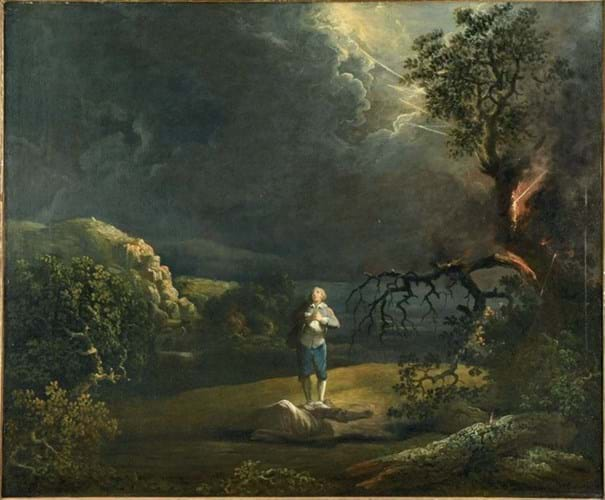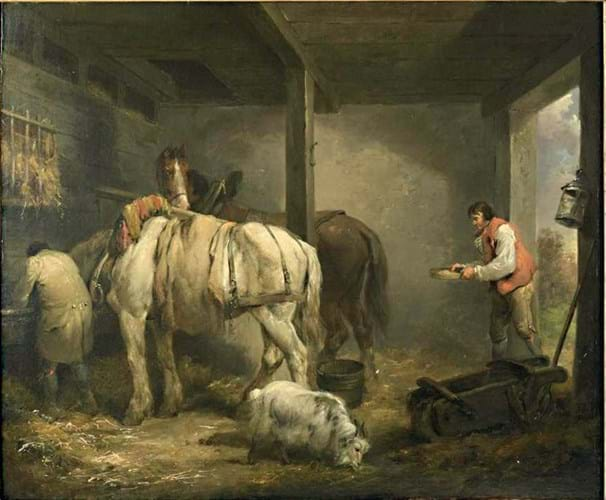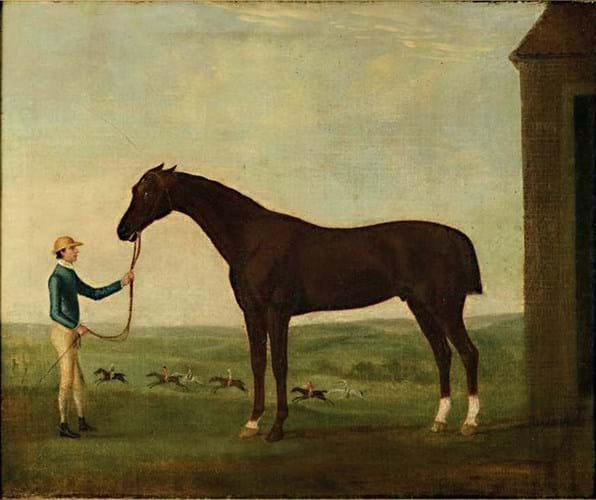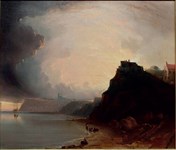A group of 12 works formerly in the collection of New York lawyer Asbjorn Lunde provided a boost to Cheffins’ (24.5% buyer’s premium) fine art sale on March 23-24.
Lunde, who died in 2017, amassed a varied collection that included Old Masters, sculptures and prints, and also supported more than 40 museums in the US and Europe.
His brother was the art historian Karl Lunde and the works in Cambridge came to auction from the Asbjorn Lunde Foundation which he set up during his lifetime to support projects in the arts and music sector.
The 12 pictures here were mainly 18th century British works. Eleven of them sold for a £33,980 total, 10 selling to private buyers and one to the trade.
Striking picture
Among the works selling above estimate was one by William Williams of Norwich (1727-97) which was a striking picture in more than one sense.
Amelia struck by lightning, a 2ft x 2ft 5in (62 x 75cm) oil on canvas dated 1763, was an example of Williams’ paintings where he experimented using powerful atmospheric effects, possibly using dramatic effects borne out of his formative years working as a scenery painter for the theatre.
The subject relates to a passage from James Thomson’s The Seasons, a collection of poems first published in 1730 which remained popular throughout the 18th century. This particular scene represents the story of Amelia and Celadon, two lovers who end in tragedy when they are caught in a violent storm and Amelia is struck by lightning.
A later and smaller treatment of the same subject by Williams from 1784 is now in the collection of Tate Britain, while another (but with a different composition) was sold at Christie’s back in 1966. Lunde had bought this example at a New York sale in 1980 for $2000 (£865).
Williams was originally an itinerant painter and draughtsman who came from Norfolk but who later spent short periods in London, exhibiting a number of works at the Royal Academy. He is known to have produced landscapes, portraits and a few cottage scenes. After returning to Norwich in the latter part of his career he gained commissions to paint life-size portraits of the mayor and chamberlain of the city.
Fully identified examples of his work do not appear often at auction, although a portrait of a colonial American officer from five years before the War of Independence made $54,000 (£41,780) at an auction at Nadeau’s in Connecticut in 2019, largely on account of its subject matter.
The estimate of £3000-5000 for the picture at Cheffins was more in line with most previous prices for Williams. On the day, after a decent competition between a number of parties, it was knocked down at £5500 to a private buyer. While a small number of more conventional portraits by Williams have fetched more, the sum ranked within the top 10 prices for the artist at auction.
Morland barn find
A characteristic barn scene by George Morland (1763-1804) also attracted interest among the Lunde lots, selling at £7500 against a £2000-4000 estimate.
The 2ft 1in x 2ft 6in (63 x 76cm) oil on canvas, signed and dated 1794, was exhibited at the Royal Academy in the year it was painted where it was titled Interior of a stable. It retained old labels on the back for London dealers The Fine Art Society and Thomas Agnews & Sons.
Showing two carthorses being fed, a goat and two figures working, it was an example of the trademark country scenes by the artist who specialised in rustic landscapes and bucolic figurative pictures. Such works appear fairly often on the market, so demand is somewhat selective.
This one, however, was deemed a good example with the serenely lit barn interior. It was also in good condition overall despite some localised areas of overpaint. Selling to a private buyer, it achieved a decent mid-range sum for Morland.
Other works by Morland from the Lunde consignment attracting bidding included one of a man on a horse outside a farmhouse that took £4000 (estimate £1000-1500) and one of a boat beneath cliffs that fetched £2400 (guide £1200-1800).
Sartorius at the races
Among the pictures from separate vendors was a portrait of Hylas, a chestnut racehorse, by Francis Sartorius the Elder (1734-1804). Signed and dated 1775, the 2ft x 2ft 6in (62 x 75cm) oil on canvas showed the stallion held by a jockey following his victory at Burford for the King’s Plate of 100gns.
Towards the end of the 18th century, Burford was a significant fixture. In this particular race, which was run in heats, there were six runners but it took only two heats before Hylas was declared the winner. Interestingly, Sartorius included an image of the race in the background of the painting, although the horses are shown in their overall finishing order (they can be identified by their coat colours and the silks).
Hylas had been bred by the Duke of Grafton and had been bought by a William Clarke in 1775. Presumably the portrait was commissioned by Clarke to record his newly purchased winning thoroughbred.
At the auction, the work was pitched at £2000-3000 and it sold at £3600. Pictures by Sartorius have certainly fetched significantly more at auction before but, as is the case with sporting works featuring horses, the market tends to favour those with the jockey ‘up’ rather than standing alongside the horse as could be seen here.
Gainsborough debate
Elsewhere at the Cheffins sale, the work with the highest estimate was a portrait of a young woman in a green dress catalogued as an early portrait by a 16-year-old Thomas Gainsborough (1727-88), previewed and pictured in ATG no 2534.
It had featured in Gainsborough specialist Hugh Belsey’s catalogue raisonné as an autograph work and Belsey himself had assisted the auction house with the cataloguing.
While some parties may have regarded it as not the prettiest portrait by the artist, others may have been unconvinced of the attribution after an article in the British Art Journal in 2020 disputed the interpretation of a group of early works as by the hand of the young Gainsborough.
In reference to the current picture, the art historian Stephen Conrad described it, along with another of a young girl dressed in pink, as “stylistically inconsistent” with known works from the artist’s oeuvre at this time, stating that it “cannot surely be by the same hand as Portrait of a boy and girl in Gainsborough’s House from c.1744”.
Estimated at £30,000-50,000 at Cheffins, it was left unsold on the day.

















